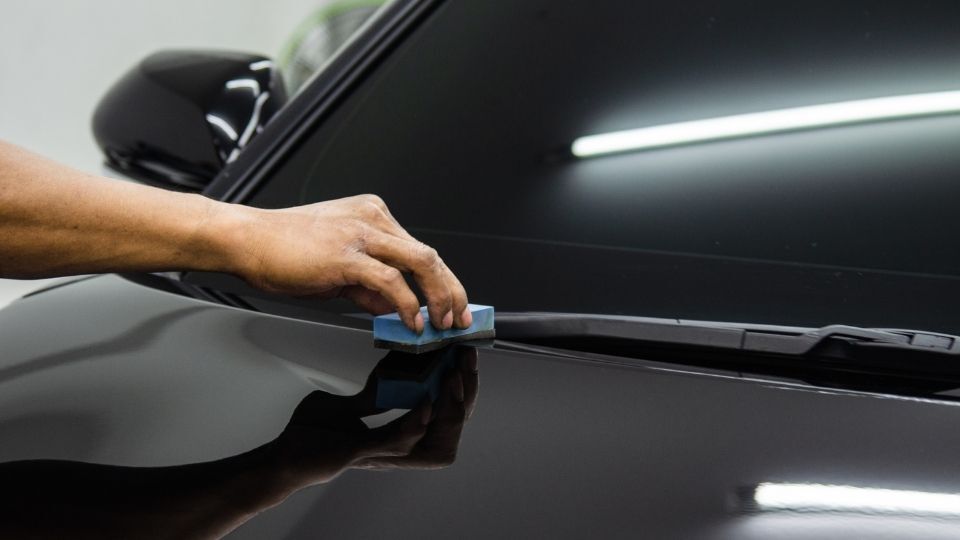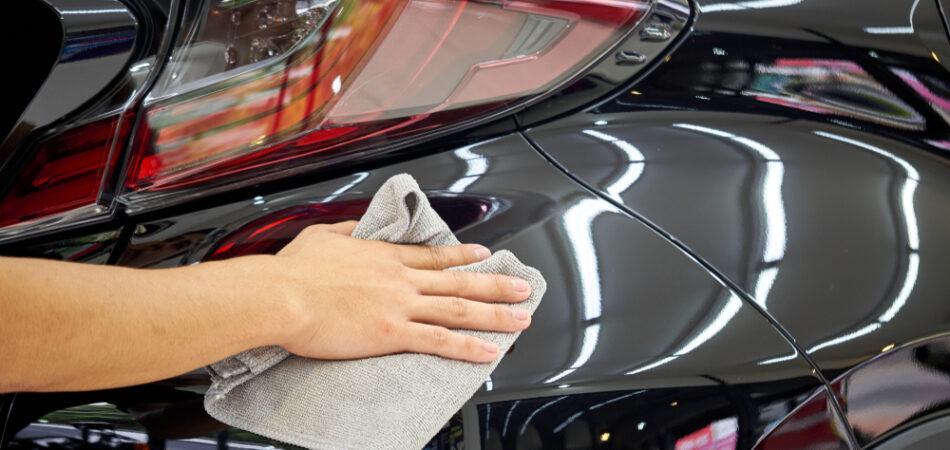Is Ceramic Coating Worth the Investment for Your Car’s Exterior?
Is Ceramic Coating Worth the Investment for Your Car’s Exterior?
Blog Article
Ceramic Covering vs. Conventional Wax: Which Gives Much Better Long-Term Security?
The discussion in between ceramic finishes and traditional wax for automobile security has actually garnered significant interest amongst auto lovers and professionals alike. While both serve the objective of guarding paint, their differences in toughness, application, and long-term upkeep prices might influence a consumer's choice. Ceramic layers flaunt premium longevity and resistance to environmental factors, yet the intricacy of their application questions concerning accessibility and usefulness. As we explore these contrasting alternatives, it becomes important to consider not only the immediate benefits yet likewise the ramifications for automobile treatment gradually.
Summary of Ceramic Covering
Ceramic layer has actually gained significant appeal among vehicle fanatics and detailers alike as a result of its advanced safety qualities. This ingenious technology is created to produce a long lasting, hydrophobic shield over an automobile's paint surface area, substantially improving its resistance to ecological impurities such as dirt, UV rays, and chemical discolorations. Unlike conventional wax, which provides a short-term layer of security, ceramic coverings bond at a molecular level with the paint, providing long-lasting toughness-- usually extending past 2 years with appropriate maintenance.
The application procedure entails precise prep work of the lorry's surface area, consisting of cleaning and polishing to guarantee optimum bond. Once applied, the coating remedies to create a robust layer that not only adds deepness and gloss to the paint but likewise streamlines maintenance. With its hydrophobic buildings, ceramic covering enables water and dust to slide off more easily, minimizing the frequency of washes and minimizing the danger of swirl marks.
Additionally, ceramic coverings are offered in different solutions, permitting users to select items tailored to their details needs and preferences. In general, ceramic finish stands for a considerable innovation in paint defense technology, delivering exceptional performance contrasted to conventional alternatives.
Overview of Traditional Wax
Traditionally considered as a staple in vehicle treatment, wax functions as a popular selection for those seeking a straightforward method to enhance and shield their car's paint - ceramic coating. Automotive wax typically consists of all-natural active ingredients, such as carnauba, or synthetic compounds, created to create a safety layer externally of the paint. This layer not only boosts the automobile's gloss and shine but additionally supplies a barrier versus environmental pollutants
The application of wax is typically user-friendly, making it accessible for both specialists and DIY fanatics. As soon as applied, wax calls for a curing period, after which it solidifies to create a safety covering.
However, while wax is reliable for enhancing the aesthetic charm of a vehicle, it is essential to note that the security it uses might demand much more regular reapplication contrasted to alternative items, such as ceramic finishings. In general, standard wax continues to be a favored option for those prioritizing convenience of usage and immediate visual improvement.
Sturdiness and Long Life Contrast
While both ceramic finishings and standard wax offer safety advantages for vehicle paint, their sturdiness and durability vary dramatically. Traditional wax, commonly made from all-natural carnauba or artificial polymers, usually offers a safety layer that lasts around three to six months. This fairly short life expectancy requires normal reapplication to preserve optimum protection.
In comparison, ceramic finishes are crafted from advanced nanotechnology, creating a covalent bond with the paint surface. This leads to a durable, hydrophobic layer that can sustain for 2 to five years, relying on the product and ecological conditions. The remarkable longevity of ceramic finishes is associated to their chemical structure, which provides improved resistance to scrapes, UV rays, and oxidation.

Defense Versus Environmental Variables
Securing a lorry's paint from environmental variables is important for maintaining its look and value with time. Vehicles are frequently subjected to a range of elements, including UV rays, bird droppings, tree sap, acid rainfall, and road gunk, every one of which can jeopardize the stability of the paintwork.
Ceramic coverings supply a robust defense against these ecological aggressors. Unlike typical wax, which can degrade swiftly under UV direct exposure, ceramic coverings create a durable, hydrophobic layer that resists the dangerous impacts of sunshine and ecological toxins. This innovative innovation produces a chemical bond with the car's surface area, supplying remarkable protection that lasts for many years, also in rough problems.
Traditional wax, while simpler to use, normally needs regular reapplication and offers limited resistance to contaminants and UV rays. Gradually, it can break down, leaving the paint vulnerable to scrapes and oxidation. On the other hand, ceramic layers keep their safety high qualities longer, substantially lowering the danger of paint damage and making sure that the automobile keeps its aesthetic allure. Consequently, ceramic coverings are significantly acknowledged as the remarkable choice for long-lasting security against environmental elements.
Application and Upkeep Distinctions
The approaches of application and subsequent maintenance for ceramic layers and typical wax vary considerably, affecting the general individual experience and effectiveness of each product. Ceramic layers call for a more elaborate application process, generally including surface preparation that includes washing, decontaminating, and polishing Click This Link the vehicle. When the surface is all set, the ceramic finish is used in a controlled setting, frequently requiring professional proficiency to make certain proper curing and bonding to the paint.

While both items enhance vehicle appearance, the longer-lasting security used by ceramic finishings might validate their first investment, despite the more requiring application procedure. Alternatively, traditional wax stays a prominent choice for those looking for a simpler, albeit temporary, remedy.

Conclusion
To conclude, ceramic coverings demonstrate significant benefits over conventional wax in terms of durability and ecological security. With a lifespan extending two to five years and premium resistance to UV rays, dust, and chemical discolorations, ceramic finishes provide a more reliable service for long-term lorry maintenance. The application process may call for specialist experience, the resulting price savings and lowered regularity of reapplication underscore the value of ceramic coatings for those seeking ideal lorry security.
The dispute between ceramic finishes and typical wax for lorry protection has actually garnered substantial focus amongst auto enthusiasts and specialists alike. Unlike traditional wax, which gives a temporary layer of protection, ceramic coverings bond at a molecular degree with the paint, supplying resilient longevity-- typically prolonging beyond 2 years with proper upkeep.
While both ceramic layers and conventional wax deal protective advantages for vehicle paint, their sturdiness and durability differ considerably. For cars and truck lovers looking for lasting defense, ceramic layers offer an engaging benefit over traditional additional info wax items.
In conclusion, ceramic finishes demonstrate significant benefits over conventional wax in terms of resilience and ecological defense.
Report this page